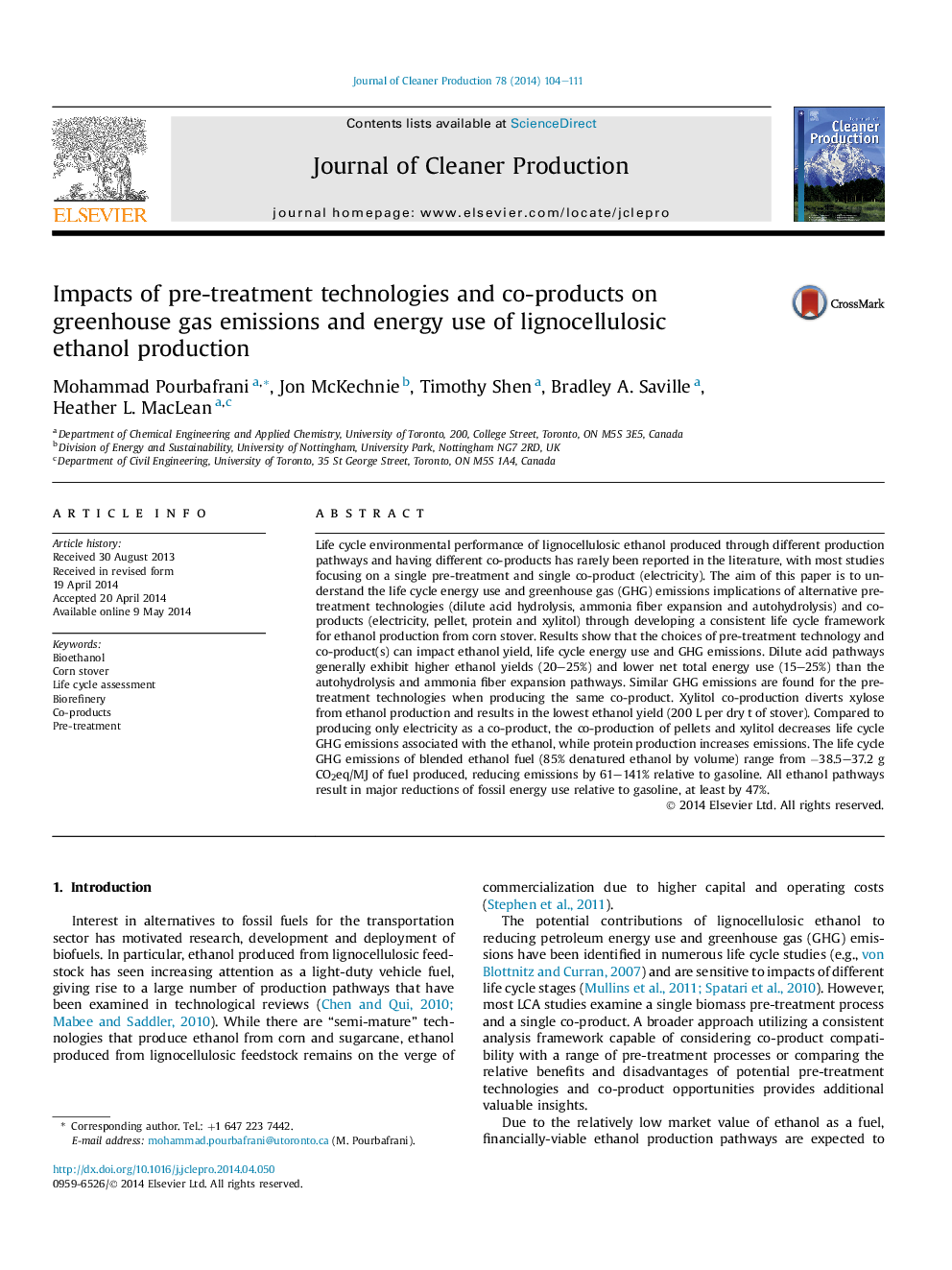| Article ID | Journal | Published Year | Pages | File Type |
|---|---|---|---|---|
| 1744877 | Journal of Cleaner Production | 2014 | 8 Pages |
•Life cycle assessment (LCA) of alternate pre-treatment technologies and co-products.•The choice of coproduct production has great impact on LCA of cellulosic Bioethanol.•Cellulosic ethanol pathways meet US legal requirement on GHG reductions.
Life cycle environmental performance of lignocellulosic ethanol produced through different production pathways and having different co-products has rarely been reported in the literature, with most studies focusing on a single pre-treatment and single co-product (electricity). The aim of this paper is to understand the life cycle energy use and greenhouse gas (GHG) emissions implications of alternative pre-treatment technologies (dilute acid hydrolysis, ammonia fiber expansion and autohydrolysis) and co-products (electricity, pellet, protein and xylitol) through developing a consistent life cycle framework for ethanol production from corn stover. Results show that the choices of pre-treatment technology and co-product(s) can impact ethanol yield, life cycle energy use and GHG emissions. Dilute acid pathways generally exhibit higher ethanol yields (20–25%) and lower net total energy use (15–25%) than the autohydrolysis and ammonia fiber expansion pathways. Similar GHG emissions are found for the pre-treatment technologies when producing the same co-product. Xylitol co-production diverts xylose from ethanol production and results in the lowest ethanol yield (200 L per dry t of stover). Compared to producing only electricity as a co-product, the co-production of pellets and xylitol decreases life cycle GHG emissions associated with the ethanol, while protein production increases emissions. The life cycle GHG emissions of blended ethanol fuel (85% denatured ethanol by volume) range from −38.5–37.2 g CO2eq/MJ of fuel produced, reducing emissions by 61–141% relative to gasoline. All ethanol pathways result in major reductions of fossil energy use relative to gasoline, at least by 47%.
